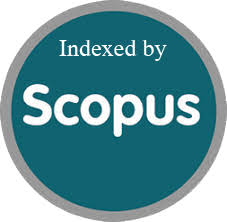Modeling Effect of Irrigation Water quality Frequency with difference Leaching requirement on the salts accumulation and yield for sorghum
Abstract
A Computer model is made in (MATLAB) language to study the effect of irrigation water salinity levels 20,15,12 dS/m irrigation applied by continuous irrigation with saline water and alternant irrigation by different methods (pure irrigation : saline two irrigation),(pure irrigation : saline irrigation) and (pure two irrigation : saline irrigation). Pure irrigation represents Tigris River salt water 0.47dS / m. Each method used the Leaching requirements (0, 0.05, 0.1, 0.15, 0.2, 0.25, and 0.3), The model depends on the principle of balancing water and salt. The computer model has been applied to the sorghum crop; a summer crop which endures medium salinity. The results show that the accumulation of salt varies according to the differences in irrigation style. The amount of salts accumulated in the soil increased by using the continuous irrigation, while the use of alternant irrigation led to reduced accumulation of salts and thus led to increased production. The amount of decrease in the accumulation of salts depends on the method of alternant irrigation and leaching requirements used. Mathematical equations have been formulation to find out the increase or decrease in the real Yield and relative evaporation transpiration as a result of the influence of the amount of salt water and pure water additives under the conditions and limitations of the study areaKeywords: Leaching, salinity, continuous irrigation, alternant irrigation, Yield








